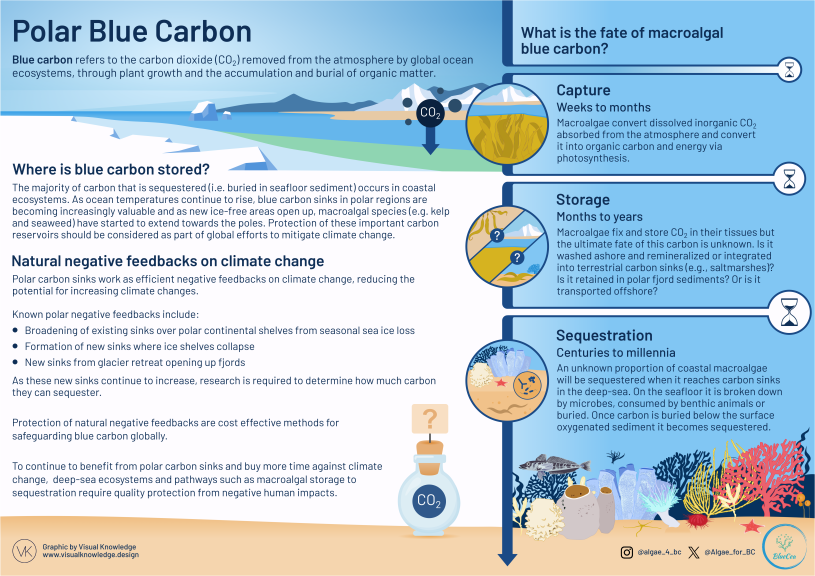Polar Blue Carbon Research in Greenland Published 15.10.2024

The oceans take in an estimated 10 billion tonnes of carbon dioxide (CO2) each year. To make sense of this contribution to protecting us against climate change, let’s picture it in terms of familiar Greenlandic animals. Imagine the vastness of the ocean acting like giant lungs, breathing in CO2 emissions equivalent to the combined weight of over 6.7 billion narwhals, 25 billion musk oxen or 20 trillion ptarmigans!
The sea ice is changing. This also changes the way of life for Greenlandic people. The old paths across the sea ice might disappear, and the animals might move to new places or become harder to find. These changes lead people to ask many questions about the future. The ocean may hold some answers.
Greenland might not have large trees due to its icy landscape, but it is home to lush coastal marine forests of kelp and seaweed (macroalgae). These marine forests are expanding their range into new areas with ice loss.
“The changes in the ocean that we can see here in Greenland caused by climate change are important for the whole world,” explains BlueCea’s principle investigator, Dr. Nadescha Zwerschke. Greenland’s marine forests improve the ocean’s ability to breathe, making it a healthier place for marine life and allowing it to take in more CO2. As emissions rise, this means that people everywhere can breathe a little easier and for longer.”
Dr. Narissa Bax, a researcher on the BlueCea project, highlights a big question on the ocean’s role in climate change: “We are trying to figure out if the carbon captured by coastal forests is really being stored away for the long term? This can only happen when it is buried on the ocean floor”. Our study locations include Greenland’s South East fjords to far-off sea beds and on land, to understand what is the fate of macroalgal blue carbon?”.
“Our research aims to make sure that the people who are most affected by our findings can actually use this information. For instance, to guide policy actions to protect and value macroalgae in ways that work for and with local Greenlandic communities”. Both Dr. Zwerschke and Dr. Bax emphasise. To communicate their research topic, BlueCea worked with Visual Knowledge to create an explanation graphic for Polar Blue Carbon available in Greenlandic, Danish and English
Download the poster in PDF format HERE
Download the poster in Faroese HERE

